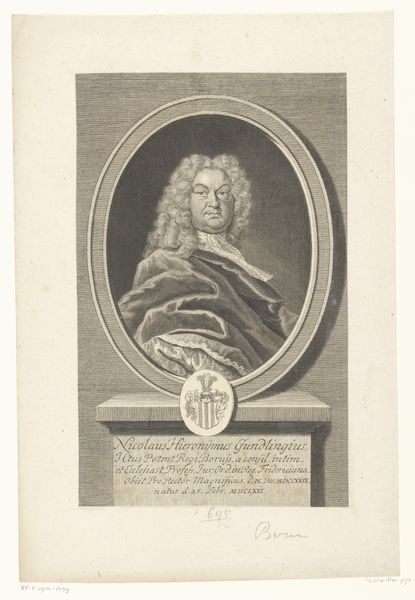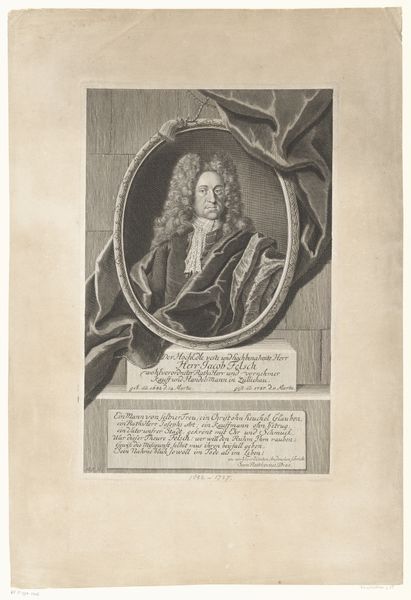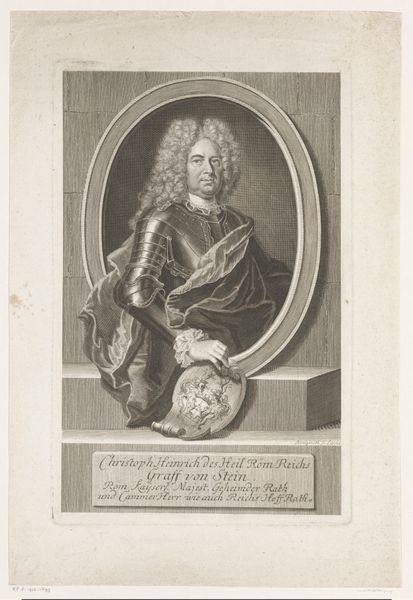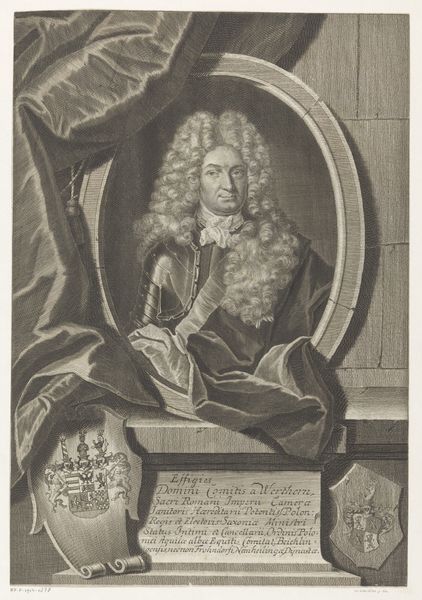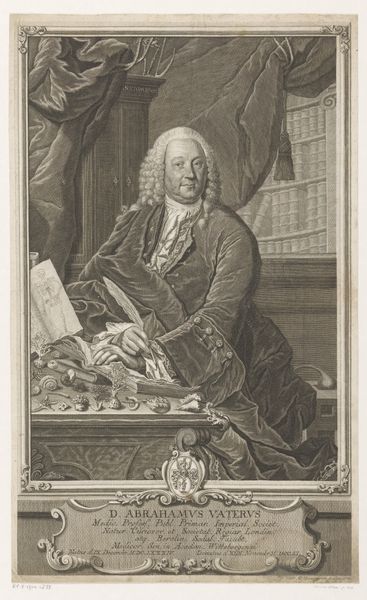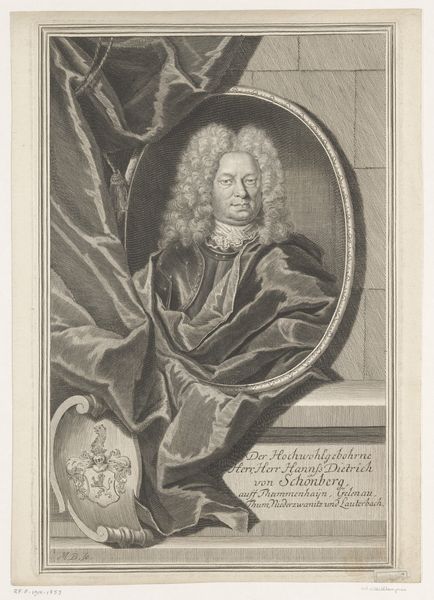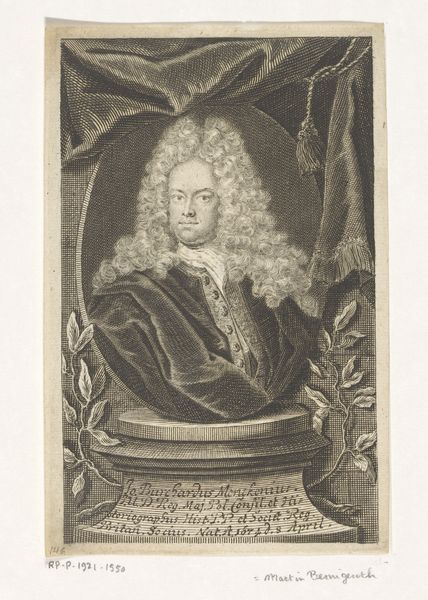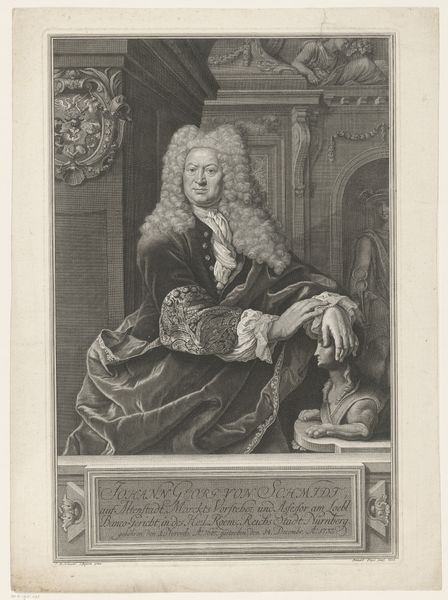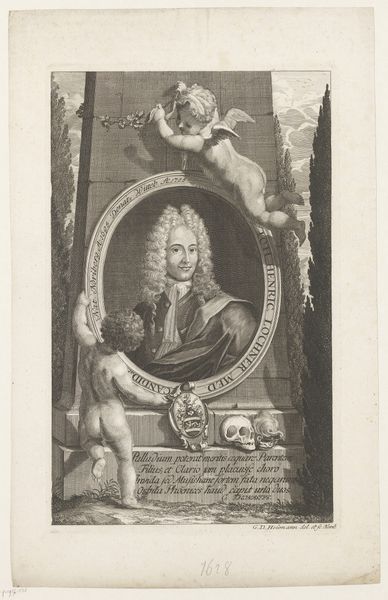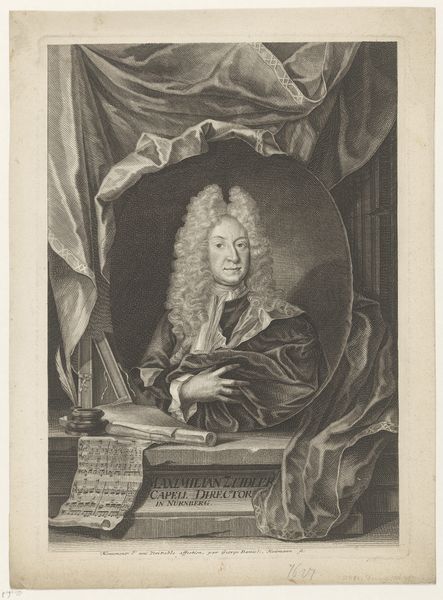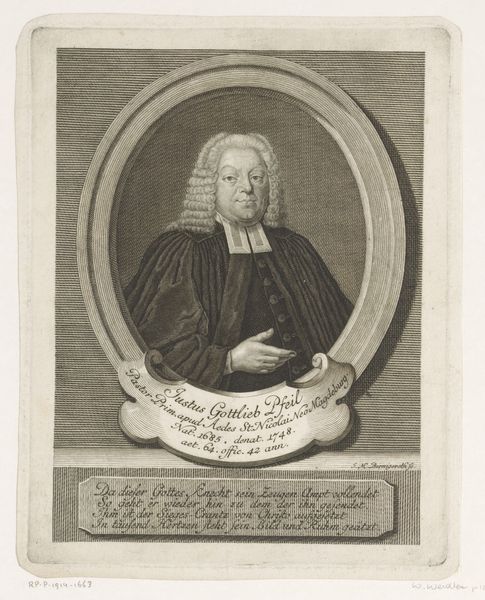
engraving
#
portrait
#
baroque
#
academic-art
#
engraving
Dimensions: height 390 mm, width 258 mm
Copyright: Rijks Museum: Open Domain
Martin Bernigeroth created this portrait of Johann Ulrich von Gülchen sometime between 1670 and 1733 using engraving. This printmaking technique is itself a marvel of material transformation. Think about it: The artist carefully incises lines onto a metal plate, using specialized tools to create grooves that will hold ink. The character of those lines – their depth, thickness, and proximity to one another – dictates the tones and textures we see in the final image. Look closely, and you can almost feel the weight of the velvet drapery, the stiffness of the legal robes, and the elaborate artifice of the wig. The sharp, precise lines of the engraving lend a crisp formality to the portrait, befitting a man of Gülchen's standing. The technique itself speaks to the labor involved in producing such an image, both for the artist and, indirectly, for the sitter, whose status is visibly affirmed. Considering the material and the making helps us understand the cultural currency of this image. It’s not just a picture; it's a carefully constructed statement of power and prestige.
Comments
No comments
Be the first to comment and join the conversation on the ultimate creative platform.
